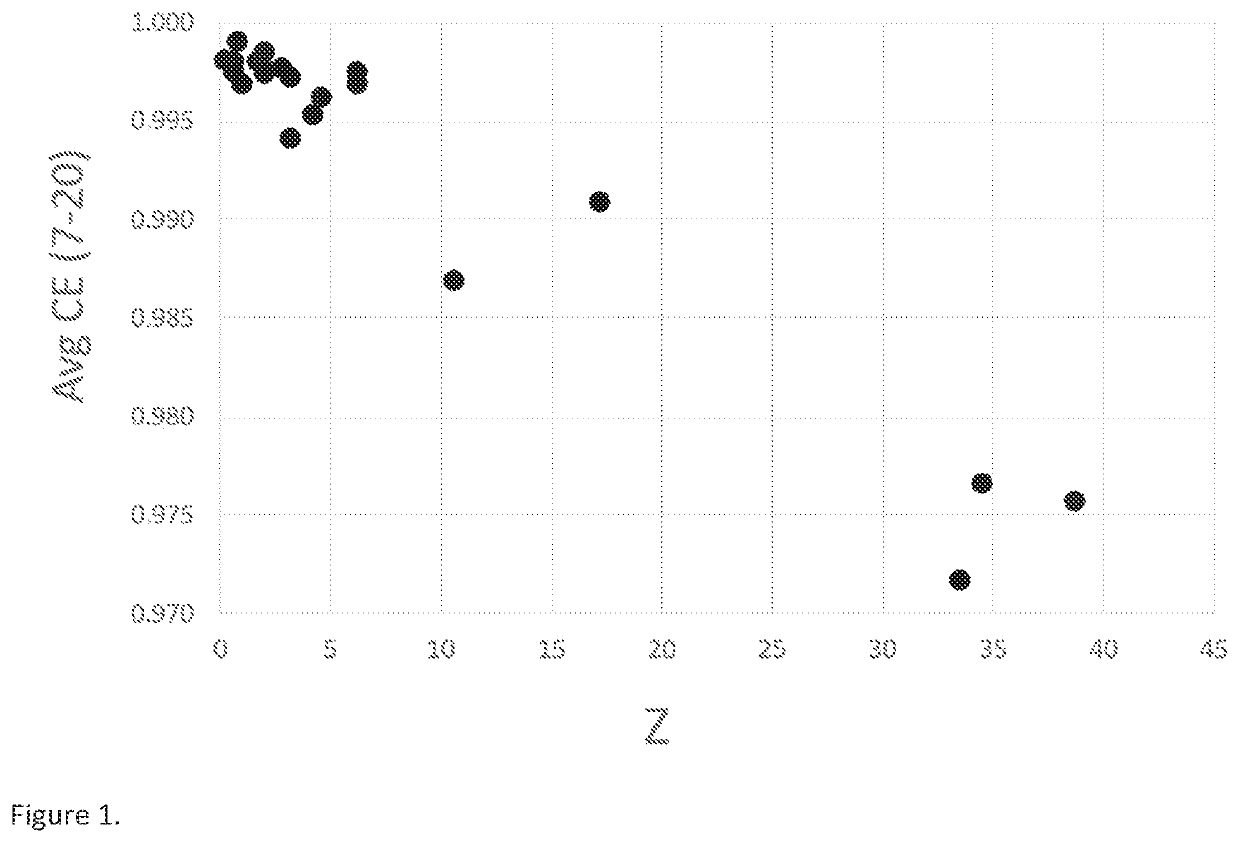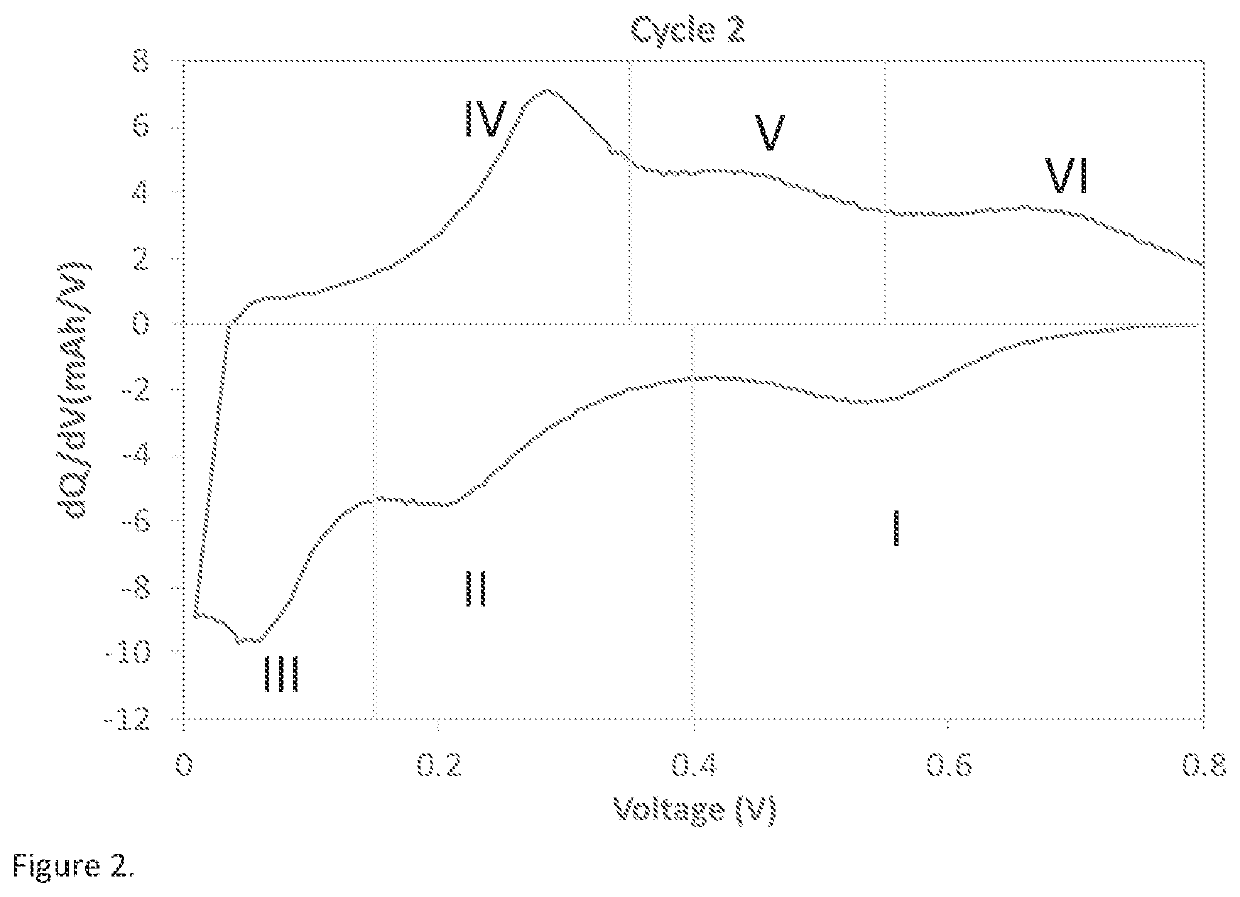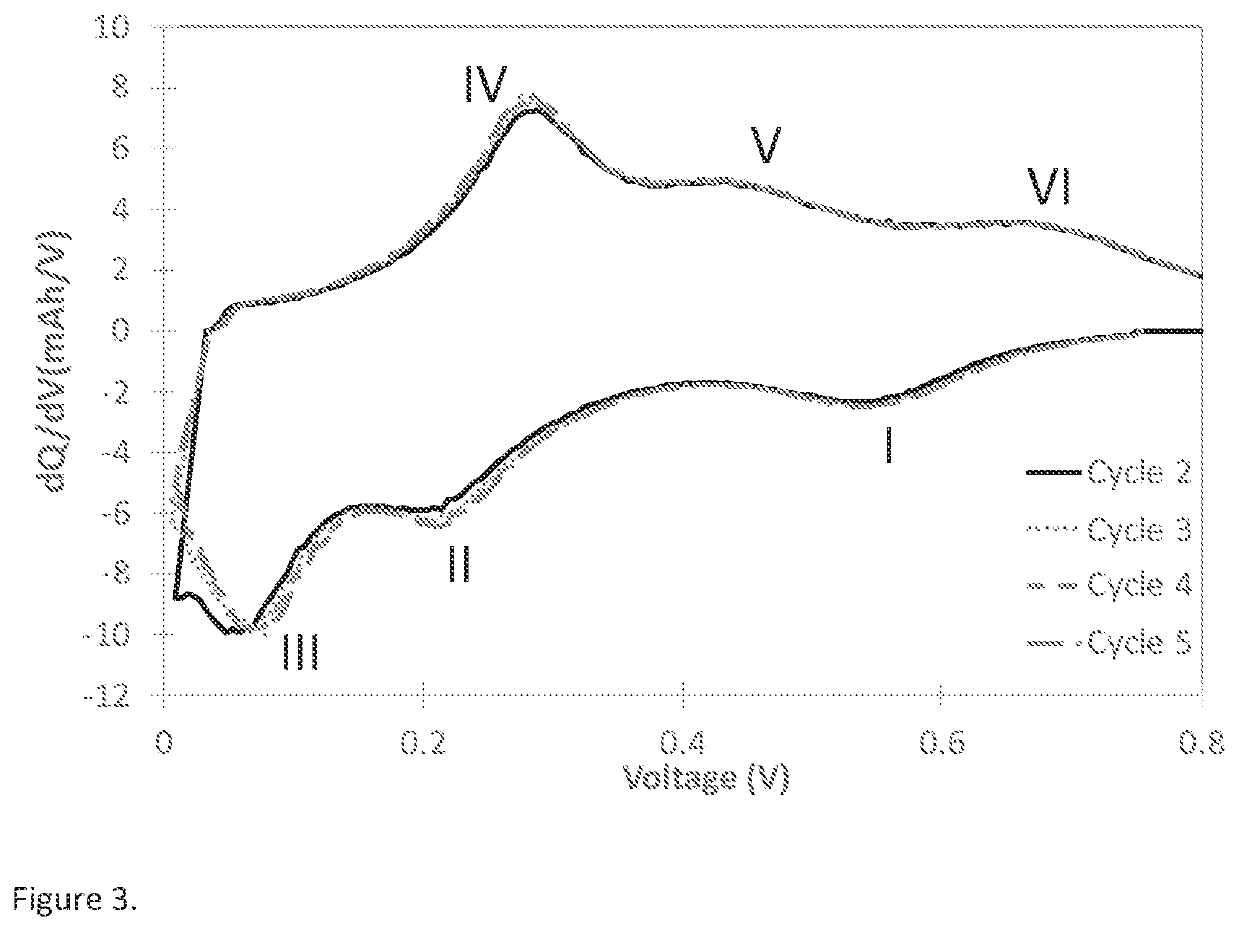Lithium-silicon battery
a lithium-silicon battery and lithium-silicon technology, applied in the field of lithium-silicon batteries, can solve the problems of inferior silicon forms in the anode, large volume change of silicon, electrode deterioration and solid-electrolyte interphase (sei) instability, and achieve the effect of new properties
- Summary
- Abstract
- Description
- Claims
- Application Information
AI Technical Summary
Benefits of technology
Problems solved by technology
Method used
Image
Examples
example 1
n of Silicon-Carbon Composite Material by CVI
[0124]The properties of the carbon scaffold (Carbon Scaffold 1) employed for producing the silicon-carbon composite is presented in Table 3. Employing Carbon Scaffold 1, the silicon-carbon composite (Silicon-Carbon Composite 1) was produced by CVI as follows. A mass of 0.2 grams of amorphous porous carbon was placed into a 2 in.×2 in. ceramic crucible then positioned in the center of a horizontal tube furnace. The furnace was sealed and continuously purged with nitrogen gas at 500 cubic centimeters per minute (ccm). The furnace temperature was increased at 20° C. / min to 450° C. peak temperature where it was allowed to equilibrate for 30 minutes. At this point, the nitrogen gas is shutoff and then silane and hydrogen gas are introduced at flow rates of 50 ccm and 450 ccm, respectively for a total dwell time of 30 minutes. After the dwell period, silane and hydrogen were shutoff and nitrogen was again introduced to the furnace to purge the ...
example 3
Various Silicon-Composite Materials
[0134]Differential capacity curve (dQ / dV vs Voltage) is often used as a non-destructive tool to understand the phase transition as a function of voltage in lithium battery electrodes (M. N. Obrovac et al. Structural Changes in Silicon Anodes during Lithium Insertion / Extraction, Electrochemical and Solid-State Letters, 7 (5) A93-A96 (2004); Ogata, K. et al. Revealing lithium-silicide phase transformations in nano-structured silicon-based lithium ion batteries via in situ NMR spectroscopy. Nat. Commun. 5:3217). As an alternative methodology to plotting dQ / dV vs Voltage, a strategy to yield similar analysis is the plot of dQ vs V. For this example, the differential capacity plot (dQ / dV vs Voltage) is calculated from the data obtained using galvanostatic cycling at 0.1 C rate between 5 mV to 0.8V in a half-cell coin cell at 25° C. Typical differential capacity curve for a silicon-based material in a half-cell vs lithium can be found in many literature ...
example 4
Size Distribution for Various Carbon Scaffold Materials
[0165]The particle size distribution for the various carbon scaffold materials was determined by using a laser diffraction particle size analyzer as known in the art. Table 7 presented the data, specifically the Dv,1, Dv10, Dv50, and Dv,90, and Dv,100.
TABLE 4Properites of various carbon scaffold materials.Carbon Scaffold#Particle Size Characteristics1Dv, 1 = 1.2 um, Dv, 10 = 2.5 um, Dv, 50 = 6.9 um,Dv90 = 11.5 um, Dv100 = 20.1 um2Dv, 1 = 1.09, Dv10 = 3.4 um, Dv50 = 7.67 um,Dv, 90 = 13.3 um, Dv100 = 17.84Dv, 1 = 0.81, Dv10 = 1.9 um, Dv50 = 6.4 um,Dv, 90 = 16.6 um, Dv100 = 26.55Dv, 1 = 0.62, Dv10 = 1.1 um, Dv50 = 4.2 um,Dv, 90 = 15.8 um, Dv100 = 29.88Dv, 1 = 1.3, Dv10 = 3.7 um, Dv50 = 16 um,Dv, 90 = 35.2 um, Dv100 = 50.79Dv, 1 = 1.2 um, Dv, 10 = 2.7 um, Dv, 50 = 7.6 um,Dv, 90 = 12.3 um, Dv100 = 20.7 um
PUM
| Property | Measurement | Unit |
|---|---|---|
| porosity | aaaaa | aaaaa |
| operating voltage | aaaaa | aaaaa |
| operating voltage | aaaaa | aaaaa |
Abstract
Description
Claims
Application Information
 Login to View More
Login to View More - R&D
- Intellectual Property
- Life Sciences
- Materials
- Tech Scout
- Unparalleled Data Quality
- Higher Quality Content
- 60% Fewer Hallucinations
Browse by: Latest US Patents, China's latest patents, Technical Efficacy Thesaurus, Application Domain, Technology Topic, Popular Technical Reports.
© 2025 PatSnap. All rights reserved.Legal|Privacy policy|Modern Slavery Act Transparency Statement|Sitemap|About US| Contact US: help@patsnap.com



